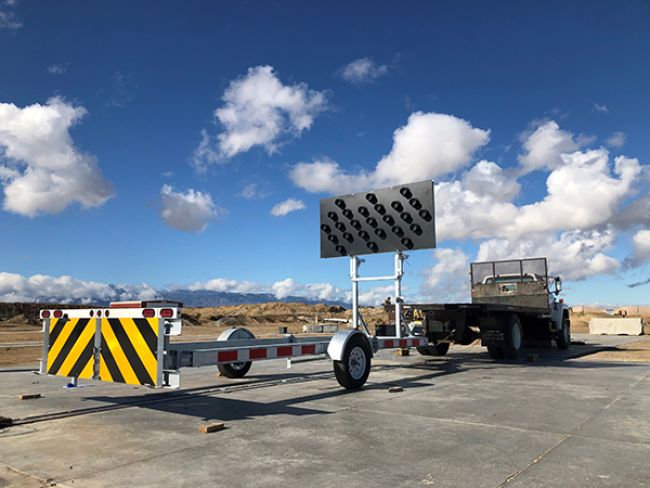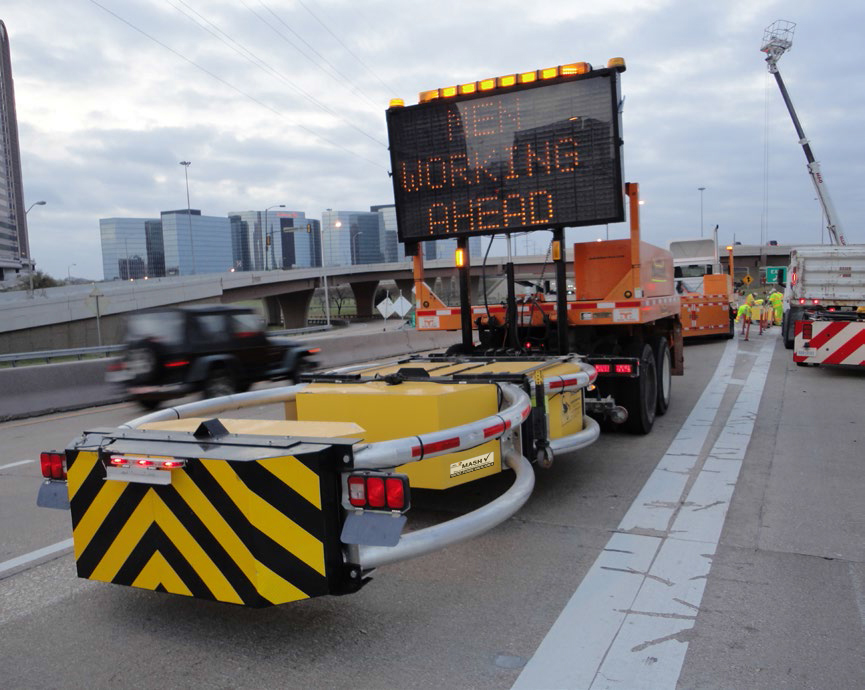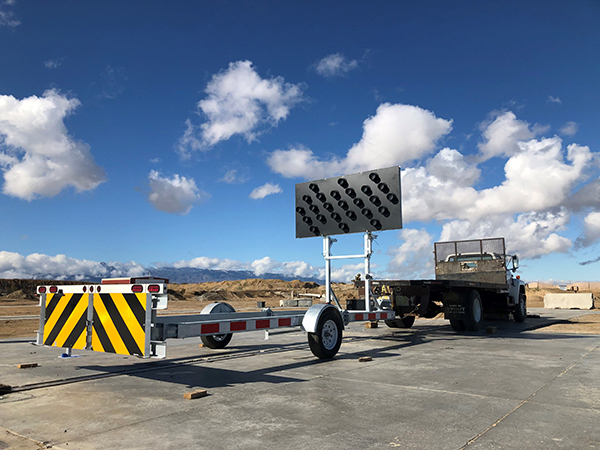
Truck-Mounted vs. Towed Impact Attenuators
Mobile impact attenuators, be they truck-mounted or towed, are designed to protect utility crews and their equipment by absorbing the kinetic energy released when a vehicle crashes into their work zone.
In simple terms, an attenuator is a cushion fitted to the rear of a truck or trailer. These devices are engineered to improve roadside safety. According to Pennsylvania-based attenuator upfitter Royal Truck & Equipment in a blog post (see https://royaltruckandequipment.com/blog/tma-trucks-explained/), “highway construction zones have become increasingly dangerous for the men and women who work in them.” The company noted that with the frequency of nighttime operations rising, “drivers falling asleep is also becoming a major cause of work zone crashes. … Without [an attenuator vehicle] protecting the workers, a distracted driver could enter a work zone, putting the crew in the direct line of fire of the errant vehicle.”
In the U.S., impact attenuators are tested and classified according to the AASHTO Manual for Assessing Safety Hardware, which sets classification based on the maximum speed of a vehicle during a collision for which the attenuator is designed.
What’s the Difference?
In terms of their basic functions, attenuator suppliers indicate there is no significant difference between a truck-mounted attenuator (TMA) and a trailer truck mounted attenuator (TTMA).

“Truck-mounted attenuators are securely mounted to the host truck frame,” said Geoff Maus, vice president of engineering for California-based attenuator manufacturer TrafFix Devices Inc. (www.traffixdevices.com). “They can articulate between stored and deployed positions and are moved to the stored position for transport to and from the work zone.” On the other hand, he said, TTMAs “have an axle and wheels and are connected to the host truck by a trailer hitch, a pintle hook and a Lunette eye.”

Jeff Grover, vice president of Ohio-based attenuator manufacturer Gregory Industries (www.gregorycorp.com), concurs on the functional equivalency of truck-mounted and towed devices. “Both are tested to the exact same crash criteria, and both provide the same level of safety upon an impacting vehicle,” he said.
However, Grover also said that from a practical and economic perspective, TMAs and TTMAs do differ. “The TMA is locked to a single vehicle whereas the TTMA can be utilized with almost any vehicle in the users’ fleet on an interchangeable basis.
“In addition, the TTMA frees up its tow vehicle to provide other services once its tour of duty has been performed,” Grover continued. “The user simply disconnects it. However, the TMA remains locked onto its tow vehicle, and that truck can’t provide any other services. Should the TMA’s tow vehicle go down due to a maintenance issue or otherwise, it’s no longer able to provide safety for the people in the work zone. Conversely, TTMAs can be easily moved to any vehicle that’s operational.”
Grover added that federal and state compliance regulations are the same for both types of attenuators.
Operational Costs
What about operational costs?
“Operationally, the costs are relatively the same,” said Kevin Mally, Gregory Industries’ national marketing manager. “There might be some minor savings when operating a TTMA where lighter tow vehicles could be used in certain circumstances, to use less fuel.”
But from a maintenance standpoint, the TTMA “requires far less maintenance – typically just tires – versus the TMA, which will require maintenance on other components, like the hydraulic system,” Mally said. “A TMA has more moving parts, so there is a likelihood more stuff could go wrong.”
Maus pointed out that, “in some locations, towable attenuators must be registered as a trailer. As truck-mounted units are attached to the host truck, they’re covered by the host vehicle’s registration. Both versions require basic maintenance to keep them in optimal, safe working condition. And in some instances, a towable attenuator can be used with a slightly lighter-duty host truck, which could lower operating costs.”
Turning to specific use cases in which one attenuator type is preferable to the other, Mally said that the TMA has an advantage “if the work zone traffic pattern is categorized as ‘must be picked up in reverse.’” That calls for the operator of the host vehicle to drive backward on the highway. However, this operation is illegal for any other vehicle operator on the road.
“On the other hand,” he said, “TTMAs have an advantage in that they can be put on almost any vehicle in the fleet that meets the minimum weight requirements for the host vehicle. In addition, roll-ahead distances are sometimes tailored to the work zone of a specific project, and for individual workdays, a project can call for longer or shorter roll-aheads. In this case, use of TTMAs would allow a simple selection of a heavier or lighter tow vehicle that same day.”
Maus pointed to how experience can be the driving factor when selecting an attenuator type. “Drivers with less experience may find that a TMA is easier to back up, especially in operations that require extended backing, like cone retrieval,” he said. “But towable attenuators are more forgiving when driven across center median ditches. Also, towable attenuators are always in the deployed, ready-to-be-impacted position. But truck-mounted attenuators must be deployed to be in their safest position.”
About the Author: David Cullen is an award-winning journalist who specializes in covering the trucking industry. Based in Connecticut, he writes for several business publications.

